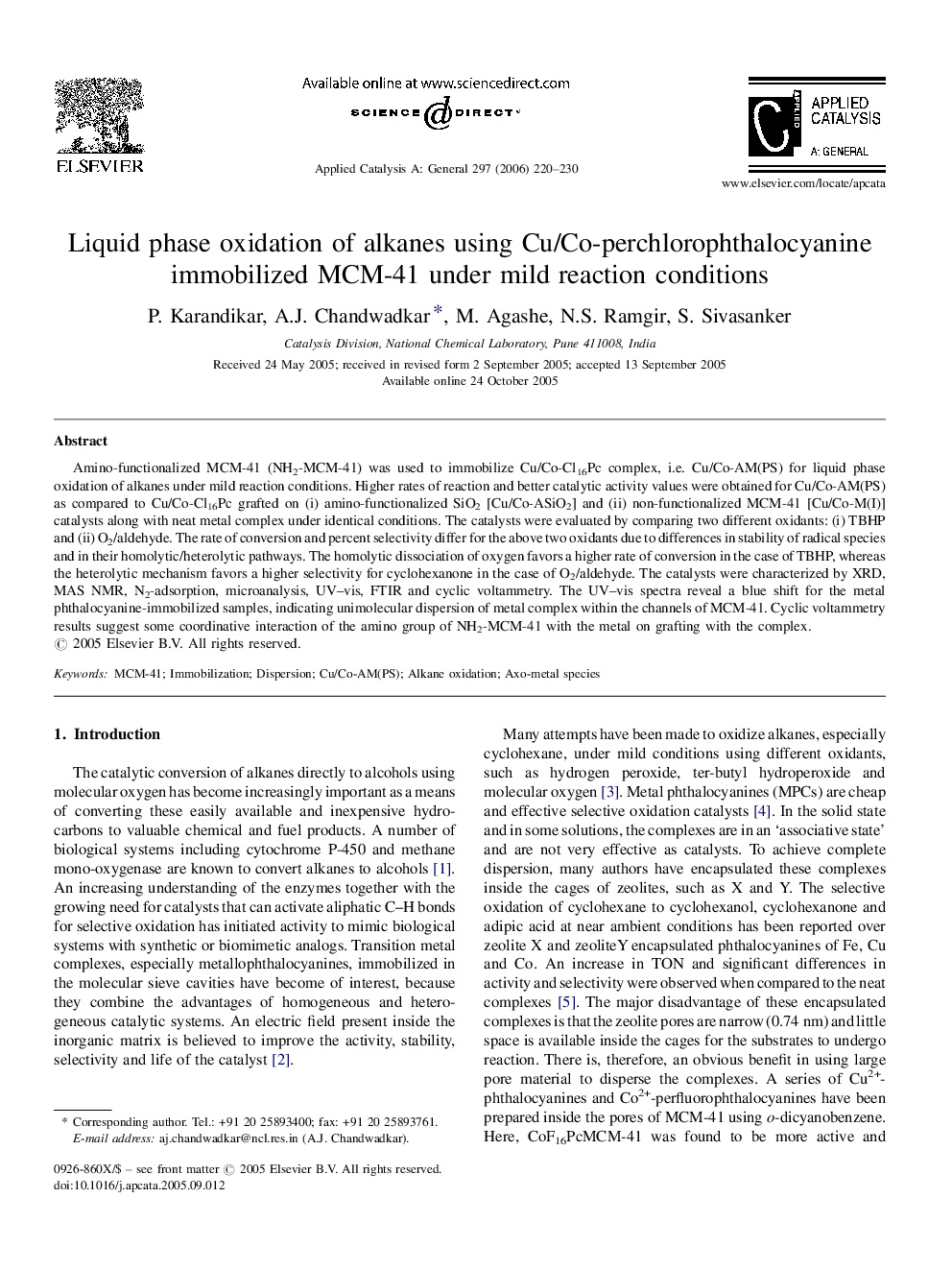| Article ID | Journal | Published Year | Pages | File Type |
|---|---|---|---|---|
| 44287 | Applied Catalysis A: General | 2006 | 11 Pages |
Amino-functionalized MCM-41 (NH2-MCM-41) was used to immobilize Cu/Co-Cl16Pc complex, i.e. Cu/Co-AM(PS) for liquid phase oxidation of alkanes under mild reaction conditions. Higher rates of reaction and better catalytic activity values were obtained for Cu/Co-AM(PS) as compared to Cu/Co-Cl16Pc grafted on (i) amino-functionalized SiO2 [Cu/Co-ASiO2] and (ii) non-functionalized MCM-41 [Cu/Co-M(I)] catalysts along with neat metal complex under identical conditions. The catalysts were evaluated by comparing two different oxidants: (i) TBHP and (ii) O2/aldehyde. The rate of conversion and percent selectivity differ for the above two oxidants due to differences in stability of radical species and in their homolytic/heterolytic pathways. The homolytic dissociation of oxygen favors a higher rate of conversion in the case of TBHP, whereas the heterolytic mechanism favors a higher selectivity for cyclohexanone in the case of O2/aldehyde. The catalysts were characterized by XRD, MAS NMR, N2-adsorption, microanalysis, UV–vis, FTIR and cyclic voltammetry. The UV–vis spectra reveal a blue shift for the metal phthalocyanine-immobilized samples, indicating unimolecular dispersion of metal complex within the channels of MCM-41. Cyclic voltammetry results suggest some coordinative interaction of the amino group of NH2-MCM-41 with the metal on grafting with the complex.
